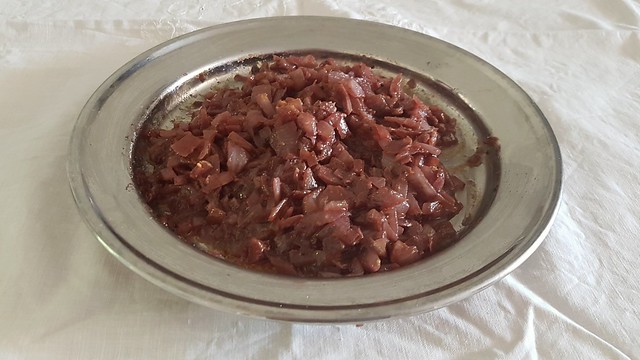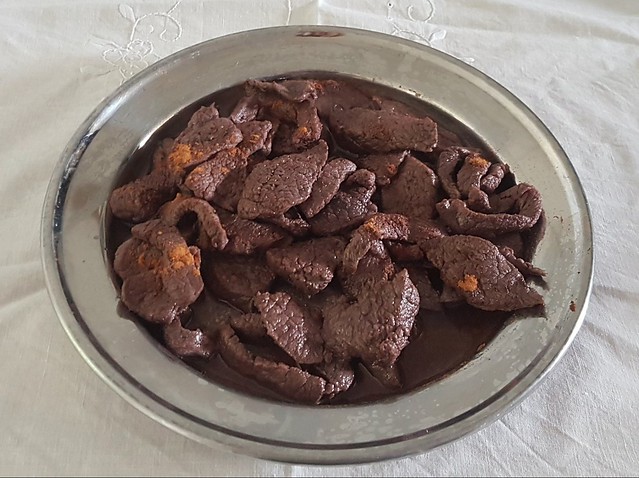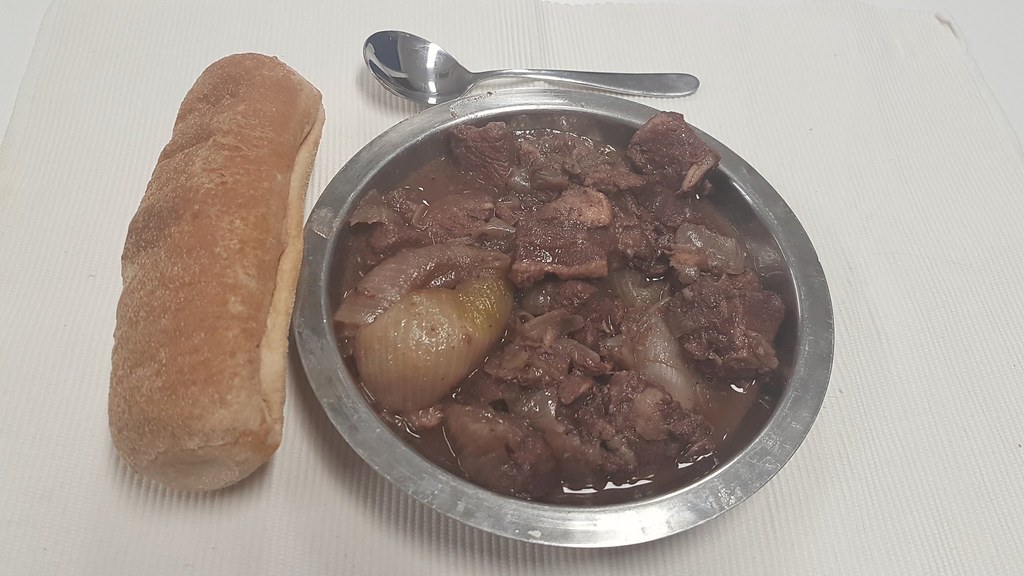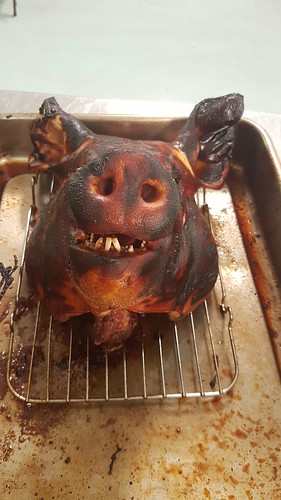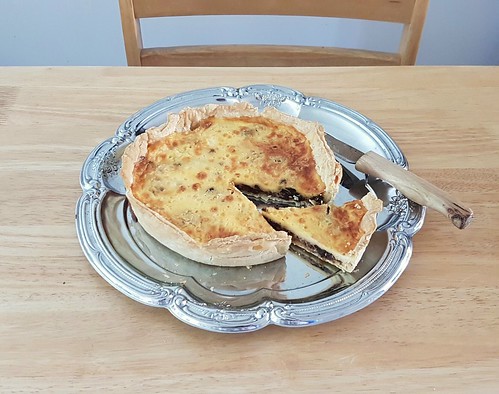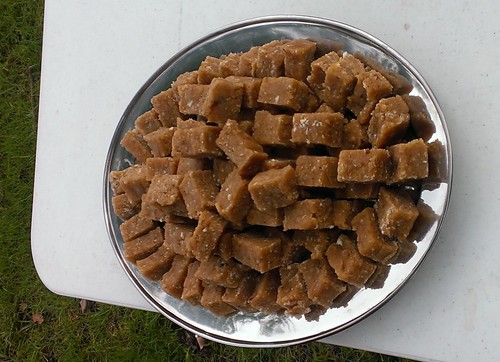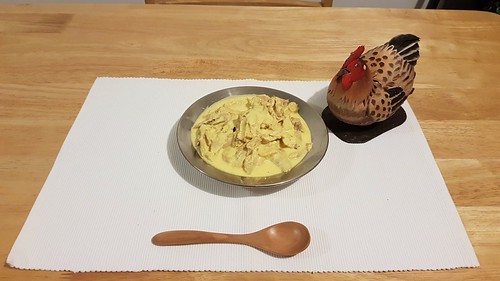xv. Bowres.
Take Pypis, Hertys, Nerys, Myltys, an Rybbys of the Swyne; or ellys take Mawlard, or Gees, an chop hem smal, and thanne parboyle hem in fayre water; an þan take it vp, and pyke it clene in-to a fayre potte, an caste þer-to ale y-now, & sawge an salt, and þan boyle it ry?th wel; and þanne serue it forthe for a goode potage. MS. Harleian 279, Leche Vyaundez, xxxi.Take lungs, hearts, ears, spleen and ribs of the pig; or else take mallard or goose, and chop them small, and then parboil them in fair water; and then take it up, and pick it clean into a fair pot, an caste thereto ale enough, and sage and salt, and than boil it right well; and then serve it forth for a good pottage.
When I first saw this recipe, I was struck by the simplicity. However, I decided I would not be using the innards of the pig; aside from the extreme difficulty of obtaining some of the bits, I was worried I’d be stuffed head first into the pot if I tried to serve it to anyone (I discovered this would probably be true when I mentioned the possibility of lung in a dish). I decided to use duck, as goose is expensive.
However, in writing up the recipe, I was suddenly struck with a thought – was the cook meant to use the innards of duck or goose, not the flesh? I decided to look for other recipes in other manuscripts. Fortunately, a quick search revealed Daniel Myers’ excellent site Medieval Cookery had already gathered all fifteenth century recipes similar to Bowres. These recipes used a variety of meats, with varying herbs and spices; the common thread was the braising in ale.
The version of Bowres in MS Harleian 279 is very plain, and uses everyday ingredients; if using the suggested pig innards, this would likely be the sort of dish cooked by a peasant or lower class urban family.
Ingredients
| 1.5 kg duck pieces | bunch sage leaves |
| 600mL beer or ale | 1 tsp salt |
Method
- Joint the duck, and put in a pot.
- Cover the duck with water, and bring the pot to the boil. Reduce to a simmer, and cook the duck until the skin and meat are opaque and much of the fat has been rendered from the duck.
- Allow the duck to cool slightly, and then pick the meat from the bones.
- Transfer the duck to a clean pot, and add the beer or ale, salt and shredded sage leaves.
- Simmer the duck until the liquid is considerably reduced, and the meat is falling apart.
- Serve the duck either in its cooking liquid, or strained.
Notes
- If you are lucky enough to find true ale (that is, brewed without hops), it will give you a more authentic result.
- You may find this recipe works better with duck legs and thighs. Though the breast has a thick covering of fat, the meat itself is quite lean, and not well suited to long, slow cooking (it turns rubbery and is unpleasant to eat).
- Parboiling the duck before braising it renders the fat from the duck. Modern braises would suggest frying the duck first to achieve the same purpose; you may find this easier.
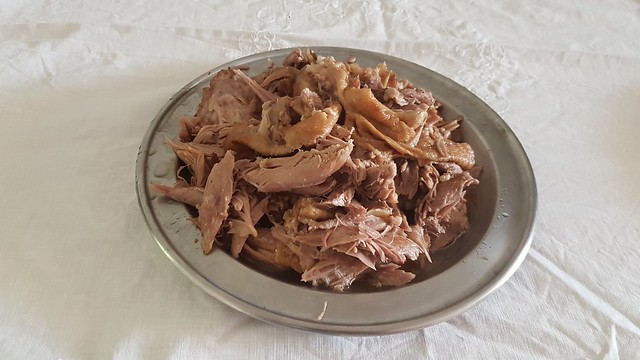
Further Reading
Click on the links below to buy direct from The Book Depository.
Austin, Thomas (ed.). Two Fifteenth Century Cookbooks
